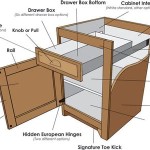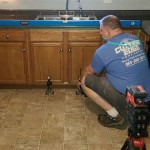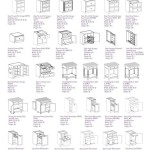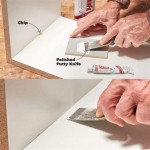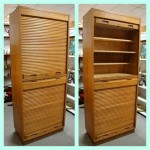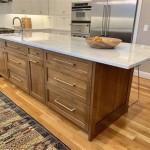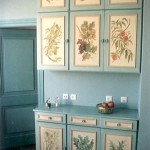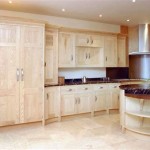How to Fix Broken Kitchen Cabinet Hinges
Kitchen cabinets are subjected to frequent use, making their hinges vulnerable to wear and tear. Over time, the repetitive opening and closing, coupled with the weight of the cabinet door, can lead to hinge failure. A broken or damaged hinge not only impairs the functionality of the cabinet but also detracts from the overall aesthetic of the kitchen. Addressing this issue promptly is crucial to prevent further damage to the cabinet and its contents. There are several approaches to repairing broken kitchen cabinet hinges, ranging from simple tightening to complete replacement. The appropriate method depends on the nature and extent of the damage.
Before undertaking any repair, it's essential to accurately diagnose the problem. Common hinge issues include loose screws, stripped screw holes, bent hinge leaves, and completely broken hinges. A careful visual inspection will typically reveal the root cause. Consider factors such as the age of the hinges, the material of the cabinet frame and door, and any signs of excessive strain or stress. Once the problem is identified, the necessary tools and materials can be gathered.
Tightening Loose Screws
One of the most common issues with cabinet hinges is loose screws. This can result from the screw threads gradually wearing down or the wood surrounding the screw hole becoming compressed. The symptom is a wobbly or sagging cabinet door. Often, the simplest solution is to tighten the existing screws using a screwdriver. Ensure the screwdriver is the correct size and type for the screw head to avoid stripping it further. Apply firm, even pressure while turning the screw clockwise. If the screw turns freely without tightening, it indicates that the screw hole is likely stripped, requiring a different repair method.
If tightening the screws doesn't resolve the issue, a slightly longer or thicker screw might provide a more secure grip. However, it's crucial to choose a screw that isn't so long that it protrudes through the cabinet door or frame. Test fit the screw before fully tightening it to ensure it aligns correctly and doesn't interfere with the hinge's operation. Consider the material of the cabinet frame and door when selecting a replacement screw. Hardwood requires a stronger screw than softwood or particleboard.
Another option, particularly for older cabinets, is to use a specialized screw designed for repairing stripped screw holes. These screws often have deeper threads or a self-tapping design, allowing them to bite into the existing wood more effectively. Before using a specialized screw, consult with a hardware professional to ensure it's compatible with the cabinet material and hinge type. In some cases, using an inappropriate screw can cause further damage to the cabinet.
When dealing with multiple loose screws on a single hinge, it's advisable to tighten them incrementally, alternating between the top and bottom screws. This helps to distribute the pressure evenly and prevent the hinge from becoming misaligned. Over-tightening any screw can strip the hole further, so exercise caution and avoid excessive force.
Repairing Stripped Screw Holes
Stripped screw holes are a common consequence of repeatedly tightening loose screws in the same location. The wood fibers surrounding the screw hole become damaged, preventing the screw from gripping effectively. There are several methods for repairing stripped screw holes, each with varying degrees of complexity and effectiveness.
One method involves using wood glue and toothpicks or wooden dowels to fill the stripped hole. Break several toothpicks or cut a small piece of wooden dowel to a length slightly longer than the depth of the screw hole. Apply a generous amount of wood glue to the toothpicks or dowel and insert them into the hole, packing them in tightly. Allow the glue to dry completely, typically for at least 24 hours. Once the glue is dry, trim the excess toothpick or dowel flush with the surface of the cabinet frame or door using a sharp knife or chisel. A new pilot hole can then be drilled, and the screw re-inserted.
Another approach is to use wood filler or epoxy putty to repair the stripped screw hole. Clean the hole thoroughly to remove any debris or loose wood fibers. Apply the wood filler or epoxy putty, ensuring it fills the entire hole and slightly overfills it. Allow the filler or putty to dry and harden according to the manufacturer's instructions. Once it's dry, sand the surface smooth and flush with the surrounding wood. A pilot hole should be drilled before re-installing the screw. Epoxy putty generally provides a stronger and more durable repair than wood filler, making it a better choice for heavily used cabinets.
For larger or more severely damaged screw holes, consider using a screw-in threaded insert. These inserts are typically made of metal and feature a threaded interior that accepts standard screws. To install a threaded insert, first drill out the stripped screw hole to the appropriate diameter specified by the insert manufacturer. Apply epoxy adhesive to the exterior of the insert and screw it into the prepared hole using a specialized installation tool. Allow the epoxy to cure completely before re-installing the hinge and screw. Threaded inserts provide a very strong and reliable repair, particularly for cabinets made of particleboard or MDF, which are more prone to stripping.
When choosing a repair method, consider the size and location of the stripped screw hole, as well as the material of the cabinet frame or door. For small holes in solid wood, the toothpick or wood filler method may be sufficient. For larger holes or holes in particleboard, a threaded insert may be necessary to provide a secure anchor for the screw.
Replacing Damaged Hinges
In cases where the hinge leaves are bent, cracked, or completely broken, replacement is the most effective solution. Replacing a hinge involves removing the old hinge and installing a new one in its place. It's essential to choose a replacement hinge that is the same size, type, and finish as the original to ensure a proper fit and maintain the aesthetic consistency of the cabinets.
Begin by carefully removing the screws from the old hinge on both the cabinet door and the cabinet frame. If the screws are stripped or difficult to remove, use a screw extractor or a specialized screwdriver designed for removing damaged screws. Once all the screws are removed, gently detach the old hinge from the door and frame. Clean the area where the hinge was mounted to remove any debris or residue.
Before installing the new hinge, compare it to the old hinge to ensure that the screw holes align correctly. If the screw holes are slightly misaligned, you may need to drill new pilot holes. Use a drill bit that is slightly smaller than the diameter of the screws to prevent stripping the new holes. Position the new hinge in the same location as the old hinge and secure it to the cabinet door and frame using the provided screws. Ensure that the screws are tightened securely but not over-tightened.
When replacing multiple hinges on a single cabinet door, it's advisable to replace all of them at the same time. This ensures that all the hinges are in good working order and that they are evenly distributing the weight of the door. Replacing only one or two hinges can create uneven stress on the remaining hinges, leading to premature failure.
After installing the new hinges, test the operation of the cabinet door. Ensure that the door opens and closes smoothly and that it aligns properly with the cabinet frame. If the door is sagging or binding, adjust the hinges as needed to achieve proper alignment. Some hinges have adjustment screws that allow for fine-tuning the door's position. Consult the hinge manufacturer's instructions for specific adjustment procedures.
When selecting replacement hinges, consider upgrading to soft-close hinges. These hinges feature a built-in damper that prevents the door from slamming shut, reducing noise and preventing damage to the cabinet frame and door. Soft-close hinges are available in a variety of styles and finishes and can be easily installed in place of standard hinges.
Finally, ensure that the new hinges are made of high-quality materials and are designed to withstand the weight and usage of the cabinet door. Choose hinges with a durable finish that will resist corrosion and wear over time. Proper maintenance, such as periodically tightening the screws and lubricating the hinges, will help to extend their lifespan and prevent future problems.

Kitchen Hinge Fix

How To Fix Kitchen Corner Cabinet Hinge Hometalk

How To Fix Hinges On Sagging Kitchen Cabinet Doors Better Homes And Gardens

Condo Blues How To Repair A Loose Cabinet Door Hinge

A Easy Fix For The Broken Cabinet Hinge David Yin S Blog

Hafele Hinge Repair Kit Toolstation

Condo Blues How To Repair A Loose Cabinet Door Hinge

How To Fix Broken Cabinet Hinges 6 Quick Solutions

Broken Hinge On Kitchen Cabinet Finninday

Kitchen Hinge Fix

